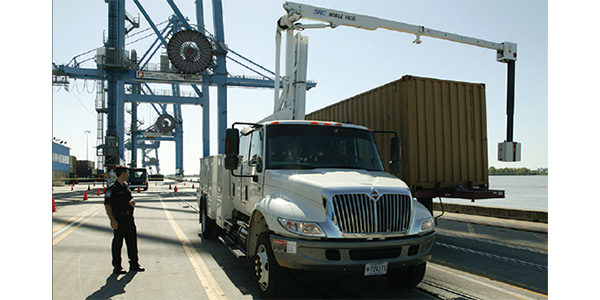Customs commissioner says he has confidence in progress of ACE, Single Window

Imports into the United States will flow faster, freer, and more efficiently due to progress on U.S. Customs and Border Protection's (CBP's) Automated Commercial Environment (ACE) and new resources for screening, processing, and analyzing inbound cargo transactions, said CBP Commissioner R. Gil Kerlikowske.
In an April 13 speech and a separate interview with DC Velocity at the Coalition of New England Companies for Trade (CONECT) 2016 Northeast Trade and Transportation Conference in Newport, R.I., Kerlikowske also credited input from the international trade community, support from Congress, and the agency's own stepped-up outreach efforts with helping to improve trade facilitation and regulatory compliance.
Specifically, Kerlikowske cited feedback from the Advisory Committee on Commercial Operations (COAC), whose members provide CBP with detailed advice and recommendations from private industry, and organizations like CONECT that represent international trade stakeholders.
While some conference attendees agreed that better and more frequent communication between CBP and the trade community is having a notable impact, they expressed concern about ACE's recent technical glitches and difficulties getting timely answers from the agency to questions about process changes. Kerlikowske said in the interview that most of the technical hiccups were quickly remedied, and that CBP's decision to delay and phase in the mandatory filing of cargo release and entry in ACE has given software vendors more time to incorporate the considerable process change that's required. Currently, 72 percent of cargo releases and 92 percent of entry summaries are being submitted through ACE, a notable increase in the weeks since CBP announced the delay, said Director, Office of Trade Relations Maria Luisa Boyce in the same interview.
Conference attendees also said they were worried about other agencies' readiness for the International Trade Data System (ITDS), also known as the "Single Window." The system, which is built on the ACE platform, will allow all federal agencies that have some jurisdiction over international trade to share and review data among themselves as well as with importers and customs brokers. When ITDS is fully implemented, importers will no longer have to separately file information with various government agencies.
While the Food and Drug Administration (FDA) and Consumer Product Safety Commission (CPSC) attend every COAC meeting and are well along in their plans, some other "participating government agencies," or PGAs, are far from ready, Kerlikowske acknowledged. One reason is that many lack the human and technical resources CBP, as the lead agency and developer of the information system that underpins ITDS, can commit to the project, he said. Still, he said, "I very honestly believe we will meet the President's executive order" that ITDS be fully implemented by the end of 2016.
MORE RESOURCES COMINGKerlikowske said he is optimistic that CBP can further reduce the time needed for cargo processing. The recently signed Trade Facilitation and Trade Enforcement Act (also known as the Customs Authorization Act) brings authority that rested within several different laws under a single law for the first time since 2003, when CBP was formed as an agency within the Department of Homeland Security, he said. The law also fully funds ACE for the first time, and it "enshrines" COAC and its relationship with CBP as a legal requirement; a future administration could not discontinue the advisory group, he noted.
CBP is allocating additional resources to trade security and facilitation, Kerlikowske said in his keynote speech, citing as an example nonintrusive inspection equipment that is replacing the original radiation-detection pOréals at a number of ports of entry. The more technologically advanced equipment is resulting in fewer false positives, and thus fewer holdups for physical inspections, he said. He hopes to expand to other ports a program CBP established at the Port of Philadelphia, where the port's customers pay the cost of overtime for inspectors to work nights and weekends to quickly process and clear perishable shipments.
CBP is also hiring more than 700 additional U.S.-based officers and is working to greatly expand the number of CBP personnel stationed overseas to carry out preshipment screening and inspections, Kerlikowske said. Currently there are some 800 CBP employees located in 40 countries. Eventually CBP would like to have "several thousand" officers in other countries to improve cargo security, he said.
Related Articles
Copyright ©2024. All Rights ReservedDesign, CMS, Hosting & Web Development :: ePublishing